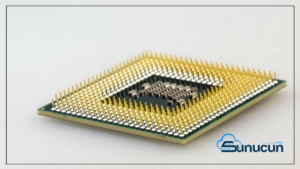What Is a Processor? Where Is It Used?
The heart of computers and other electronic devices are processors, which perform data processing and computational tasks. So, what is a processor and where is it used? In this article, we will explore what a processor is, how it works, and its various applications in detail.
What Is a Processor?
A processor, commonly known as the “Central Processing Unit” (CPU), is considered the brain of a computer. It handles all the computational and data processing tasks in a computer. Essentially, a processor takes in data, processes it, and produces results related to that data.
A processor generally consists of three main components:
- ALU (Arithmetic and Logic Unit): The ALU performs arithmetic operations (addition, subtraction, multiplication, division) and logical operations (comparison, AND, OR, NOT). It processes data and produces results. The performance of the ALU affects the overall speed of the processor.
- CU (Control Unit): The CU coordinates all operations of the processor. This unit directs the operation of the processor, reads commands, and executes necessary tasks. The control unit ensures that instructions are executed correctly.
- Registers: Registers are small memory areas within the processor used for fast access. Data is temporarily stored and processed here. Registers speed up processing by providing quick data access.
Processors are integrated circuits capable of working at high speeds and performing various tasks. Their performance depends on factors such as the number of cores, clock speed (in GHz), and other technical specifications. Modern processors usually offer high performance with their multi-core structures and can effectively manage multitasking.
How Does a Processor Work?
A processor handles various tasks by processing given instructions. The basic operation principle of a processor includes the following steps:
- Instruction Fetch: The processor retrieves an instruction from memory. In this step, the processor processes instructions sequentially. Instruction fetching determines which tasks the processor will perform.
- Instruction Decode: The fetched instruction is decoded, and it is determined what actions need to be taken. At this stage, the meaning of the instruction and how it should be processed are understood. Decoding ensures the instruction is implemented correctly.
- Instruction Execution: The decoded instruction is executed. Necessary operations are performed on the data, and results are obtained. This stage is where the processor carries out its actual functions.
- Result Storage: The processor stores processed data in memory or sends it to output devices. Storage ensures that data is available for future operations.

Where Are Processors Used?
Processors are used in a wide variety of devices and systems. Here are some common applications of processors:
1. Computers
Computers are the most common application of processors. Desktop computers, laptops, and servers all use processors to perform all computational and data processing tasks. The performance of computers largely depends on the processor’s speed and core count. More powerful processors offer faster data processing and better multitasking capabilities.
2. Smartphones and Tablets
Smartphones and tablets contain mobile processors. These processors manage mobile applications, multimedia processing, and other functions. Processors in smartphones often balance energy efficiency and performance. Additionally, mobile processors provide high performance despite their small size.
3. Gaming Consoles
Gaming consoles use high-performance processors to handle game processing and graphics creation. These processors are designed to make the gaming experience smooth and realistic. Processors in gaming consoles deliver advanced graphics and speed performance, providing a high-quality gaming experience.
4. Home Electronics and Smart Devices
Processors are also found in smart home devices, televisions, refrigerators, and other home electronics. These devices control various functions and allow user interaction. Processors in smart devices make the devices smarter and more interactive.
5. Industrial Applications
Processors are used in industrial automation systems, robots, and manufacturing machines. These processors optimize production processes and ensure machines operate correctly. Industrial processors are designed for durability and reliability.
Advantages and Disadvantages of Processors
Advantages
- High Performance: Processors deliver effective performance by processing data and performing calculations at high speeds. This allows applications to run quickly.
- Multitasking Capabilities: Modern processors can handle multiple tasks simultaneously due to their multi-core architecture. This enhances multitasking capabilities.
- Advanced Energy Efficiency: Especially in mobile and industrial processors, energy efficiency extends battery life. This allows devices to run longer.
- High Reliability: Quality processors offer high reliability and long-term use, which is crucial for critical applications.
Disadvantages
- Heat Issues: High-performance processors can overheat and may require cooling solutions. This can lead to additional costs and maintenance.
- High Cost: High-performance processors are generally more expensive. This can impact budgets and increase costs.
- Energy Consumption: Some processors can consume high amounts of energy, potentially causing issues with energy efficiency. This is particularly important in mobile devices.
- Management Challenges: Managing and configuring processors can be time-consuming. Especially on large websites, processor configurations may need regular review.
Conclusion
Processors are fundamental components of modern technology and play an essential role in various devices. They are used in everything from computers and mobile devices to gaming consoles and industrial systems. The performance of processors affects the overall efficiency and functionality of devices. Therefore, choosing and managing processors correctly is crucial for both personal and industrial applications. As technology advances, the performance and functionality of processors continue to evolve, making it important for users to stay updated with current technologies.




